
Casa Batlló, a masterpiece designed by the visionary architect Antoni Gaudí, exemplifies the essence of Modernisme in Barcelona. This iconic building captivates visitors with its organic shapes, vibrant colors, and intricate details, making it a true symbol of artistic innovation.
Often referred to as Casa Batlló: Gaudí's Blue Beauty, this architectural gem is renowned for its stunning facade adorned with mosaic tiles and unique, flowing forms. As a UNESCO World Heritage Site, it stands as a testament to Gaudí's genius and his ability to harmonize nature with art, offering a magical experience to all who explore its enchanting spaces.
Exploring the Architectural Marvel of Casa Batlló by Gaudí
Exploring Casa Batlló reveals a world where architecture transcends traditional boundaries. Gaudí's innovative use of natural forms and colors creates a sensory experience that is both captivating and thought-provoking. The building's façade, with its wave-like structures, reflects the artist's fascination with the sea, inviting visitors to appreciate the delicate interplay between light and shadow.
Inside Casa Batlló, the enchanting interiors are a testament to Gaudí's mastery of space and light. The use of curved walls and organic shapes leads to a sense of fluidity, mimicking the rhythms of nature. Key features to observe include:
- The stunning stained glass windows that filter natural light.
- The uniquely designed fireplace in the noble floor.
- The breathtaking central staircase that resembles a dragon's spine.
The roof of Casa Batlló, often compared to a dragon's back, is adorned with vibrant ceramic tiles that shimmer in the sunlight. This iconic element is not just visually striking; it represents Gaudí’s deep appreciation for symbolism and storytelling through architecture. Each tile and curve tells a story, echoing the history and mythology of the region.
In summary, Casa Batlló stands as a pinnacle of Gaudí's architectural vision, seamlessly blending functional design with artistic expression. Its status as a UNESCO World Heritage Site emphasizes its cultural significance, ensuring that future generations will continue to explore and admire this remarkable masterpiece.
The Symbolism Behind Casa Batlló’s Vibrant Colors
The vibrant colors of Casa Batlló are not merely decorative; they serve as a profound expression of Gaudí's artistic vision. Each hue is carefully chosen to evoke emotions and tell stories. For instance, the rich blues and greens symbolize the sea and sky, representing tranquility and harmony. In contrast, the warm reds and oranges signify vitality and energy, showcasing the dynamic relationship between nature and architecture.
Gaudí's use of color also reflects the changing light throughout the day, enhancing the building’s interaction with its environment. The facade, made of broken ceramic tiles, creates a stunning mosaic effect that shifts in appearance based on the time of day and weather conditions. This interplay of color and light underscores the idea that architecture can be a living entity, continually evolving with its surroundings.
Moreover, the colors are imbued with cultural significance, reflecting Catalonia’s rich history and traditions. Some key elements include:
- The blue tones echo the Mediterranean, emphasizing the region's maritime heritage.
- The earthy colors represent the connection to the land and Gaudí's love for nature.
- The vibrant accents symbolize the artistic spirit and creativity of Barcelona.
Ultimately, the vibrant colors of Casa Batlló are a testament to Gaudí's genius in merging art with architecture. They invite visitors to experience the building not just as a visual marvel, but as a narrative filled with cultural symbolism, emotion, and a celebration of life itself.
A Deep Dive into the Design Elements of Casa Batlló
Casa Batlló's design elements are deeply rooted in nature, showcasing Antoni Gaudí's visionary approach to architecture. The building's organic shapes mimic natural forms, such as bones and plants, creating a seamless blend between structure and the environment. Notably, the façade features:
- Curvilinear balconies that evoke the appearance of flowers.
- Mosaic tiles that shimmer like scales, enhancing its aquatic theme.
- A roofline that resembles the back of a dragon, symbolizing strength and protection.
The innovative use of light within Casa Batlló is another remarkable aspect of Gaudí's design. The strategic placement of windows and skylights allows natural light to flood the interiors, creating dynamic visual effects. Key features include:
- Stained glass that casts colorful reflections on the walls.
- Open spaces that promote airflow and enhance the sensory experience.
- Light wells that draw illumination deep into the heart of the building.
Furthermore, Gaudí’s meticulous attention to detail is evident in the decorative elements throughout Casa Batlló. From the intricately designed doors to the custom furnishings, every aspect reflects his artistic intent. For instance, the use of:
- Colorful ceramics that celebrate local craftsmanship.
- Ironwork that mimics natural forms, enhancing the overall aesthetic.
- Textured surfaces that invite touch and engagement.
In conclusion, Casa Batlló serves as a profound example of how architecture can embody artistic expression. Each design element not only enhances the building’s beauty but also communicates deeper meanings, encapsulating Gaudí's vision of creating a harmonious relationship between art, nature, and functionality.
The Historical Context of Casa Batlló in Modernist Architecture
Casa Batlló was completed in 1906 during a period when Barcelona was experiencing a cultural renaissance known as the Modernisme movement. This architectural style sought to break away from traditional design, embracing innovation and individuality. Influenced by the Art Nouveau movement, Modernisme in Barcelona was characterized by organic forms, intricate details, and the incorporation of local materials, which Gaudí masterfully applied in Casa Batlló.
The historical context of Casa Batlló is essential for understanding its significance in Modernist architecture. The turn of the 20th century saw a wave of creativity in Europe, driven by industrial advancements and a desire for artistic expression. Barcelona became a hub for architects and artists who aimed to redefine the urban landscape. Key figures of this era included Gaudí, Lluís Domènech i Montaner, and Pere Casals, all of whom contributed to the unique architectural identity of the city.
Gaudí's approach to Casa Batlló reflected not only his personal vision but also the broader cultural currents of his time. The building was commissioned by the wealthy Batlló family, who desired a residence that would embody their status and taste. In doing so, Gaudí pushed the boundaries of architectural design, incorporating elements such as curvilinear forms and vibrant colors that challenged conventional aesthetics. This transformation was emblematic of the Modernisme movement's goal to create a new visual language.
Furthermore, Casa Batlló stands as a testament to the synergy between architecture and the natural environment, aligning with the period's reverence for nature. Gaudí's design was heavily influenced by organic shapes and motifs, drawing parallels between the structure and the surrounding landscape. This emphasis on nature not only reflects the ideals of the Modernisme movement but also highlights the cultural significance of Casa Batlló as a masterpiece that harmonizes art and architecture within the rich tapestry of Barcelona's history.
Inside Casa Batlló: A Journey Through Gaudí's Imagination
Entering Casa Batlló is akin to stepping into a dreamscape crafted by Gaudí's extraordinary imagination. The interior corridors enchant with their fluid forms, leading visitors on a journey through surreal spaces that challenge conventional architectural norms. Each room showcases Gaudí's unparalleled ability to fuse functionality with artistic expression, creating environments that feel both whimsical and inviting.
One of the most striking features of Casa Batlló is the light and color interplay throughout its design. The strategic placement of windows and skylights allows natural light to filter in, casting ever-changing patterns on the walls. This dynamic interaction not only enhances the aesthetic appeal of the space but also reflects Gaudí's philosophy that architecture should evolve with its surroundings, bringing a sense of life into the building.
The elements of nature are seamlessly woven into the fabric of Casa Batlló, from the organic shapes of the ceilings to the textures of the walls. Gaudí's inspiration from the natural world is evident in details such as the rippling surfaces that mimic waves and the floral motifs that adorn various spaces. This integration of nature into architectural design invites visitors to experience the building as a living organism that resonates with the environment.
Lastly, Casa Batlló serves as a testament to Gaudí's visionary approach to materials and craftsmanship. The use of local materials, like ceramics and glass, showcases the artist's commitment to celebrating Catalan culture. Each handcrafted element tells a story, making the interiors not only visually striking but also deeply connected to the artistic heritage of the region, allowing visitors to appreciate the artistry behind every curve and detail.
Why Casa Batlló is a UNESCO World Heritage Site
Casa Batlló is recognized as a UNESCO World Heritage Site due to its outstanding universal value, illustrating the principles of Modernisme and showcasing Antoni Gaudí's unique architectural style. The building is a profound manifestation of his ability to merge nature with architecture, reflecting the cultural identity of Barcelona. Its intricate designs and innovative techniques contribute to its significance, positioning it as a landmark of creativity in the early 20th century.
In addition to its aesthetic appeal, Casa Batlló embodies several key aspects that justify its UNESCO designation:
- Innovative Use of Materials: Gaudí employed local materials and innovative techniques, such as trencadís, to create a harmonious relationship with the surrounding environment.
- Symbolic Design: The building's forms and colors are laden with symbolism, representing elements of nature and Catalan culture.
- Cultural Significance: As a part of the "Works of Antoni Gaudí," it stands alongside other masterpieces that reflect his visionary contributions to architecture.
Moreover, the integration of natural elements and the fluidity of the structure make Casa Batlló a paradigm of organic architecture. Each corner and detail is meticulously crafted to engage the senses and convey a narrative, ensuring that the building remains a vital part of Barcelona's architectural heritage. This dedication to artistic innovation exemplifies why it continues to attract admiration and scholarly interest worldwide.
Ultimately, Casa Batlló's designation as a UNESCO World Heritage Site affirms its role as a cultural beacon that not only highlights Gaudí's genius but also serves as a reminder of the importance of preserving architectural masterpieces that celebrate human creativity and cultural history.
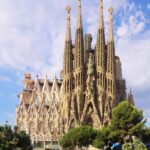 Sagrada Familia: Famous Barcelona Basilica
Sagrada Familia: Famous Barcelona Basilica Get your Casa Batlló tickets online or from authorized vendors. Recommended to book ahead.
Get your Casa Batlló tickets online or from authorized vendors. Recommended to book ahead.If you want to know other articles similar to Casa Batlló: Gaudí's Blue Beauty you can visit the category WHERE YOU CAN GO.
Leave a Reply


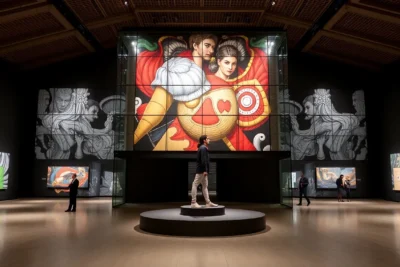
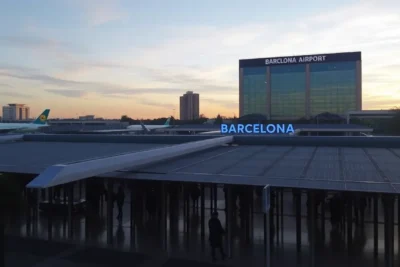

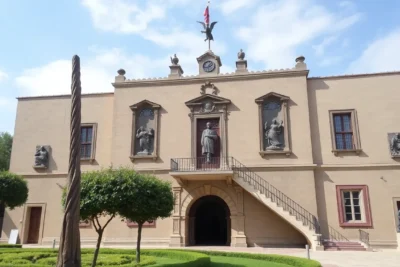


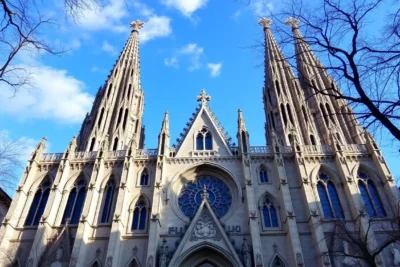

Read more!